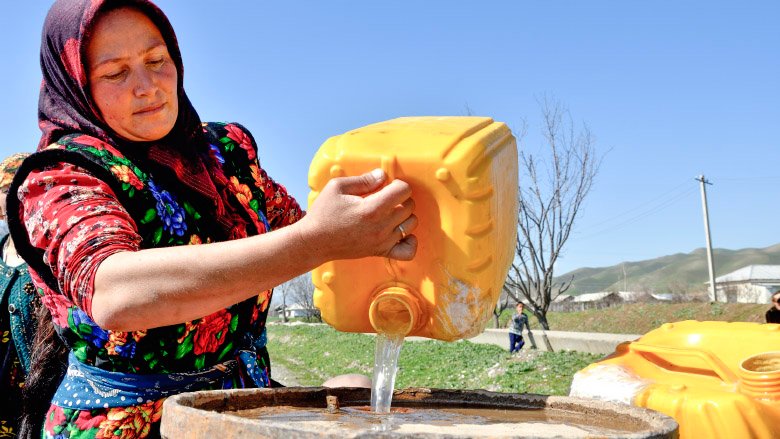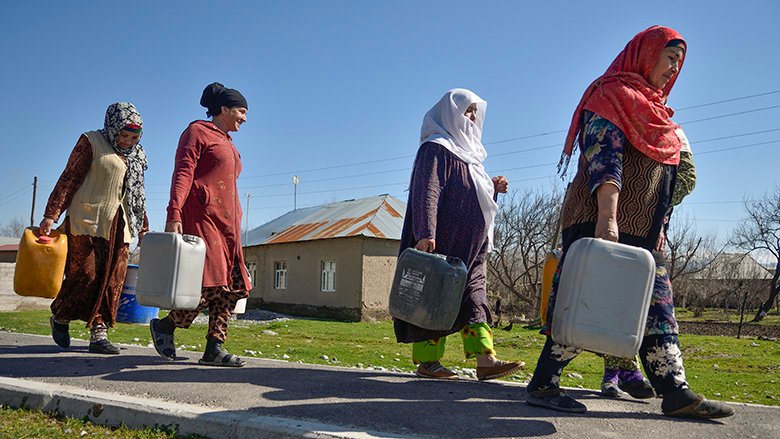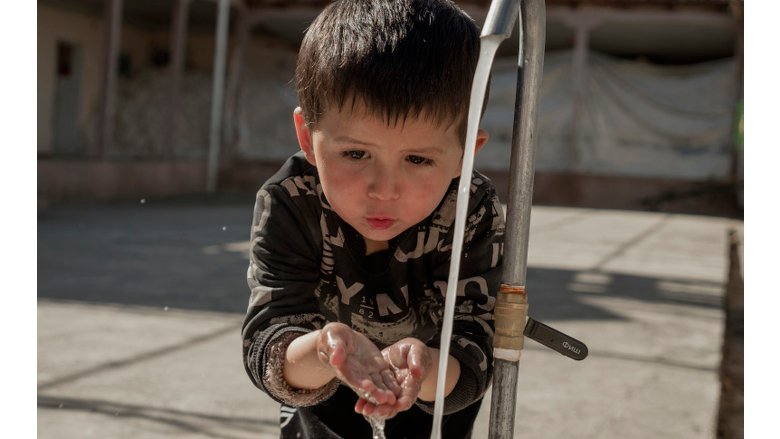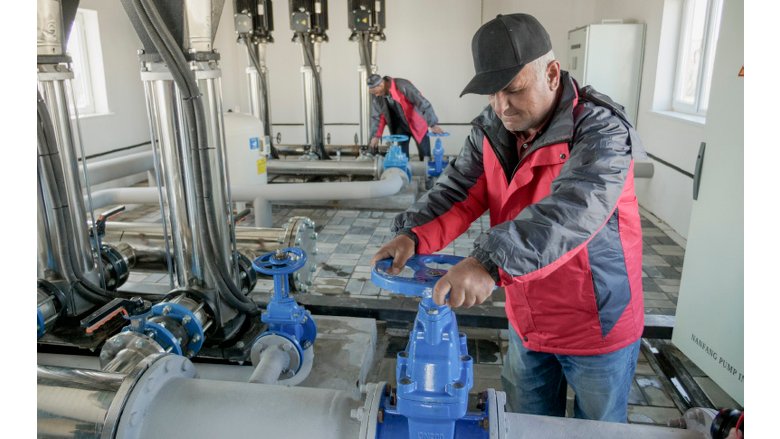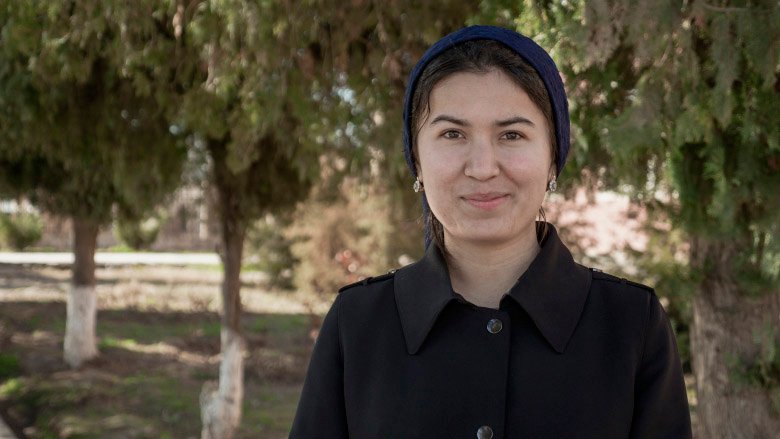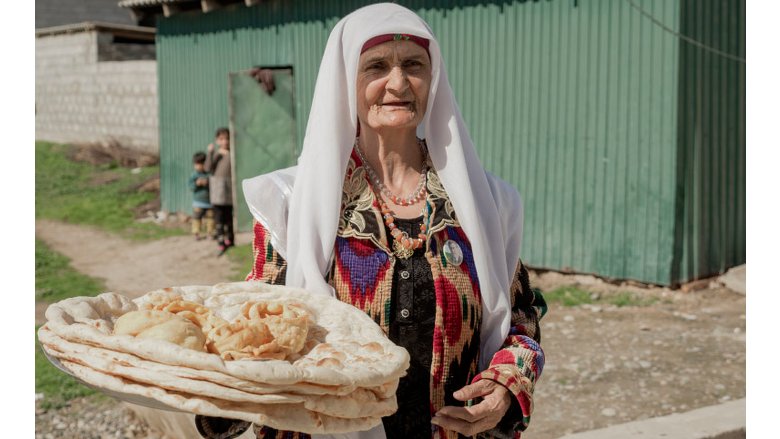The Burden of Fetching Water
A water access, sanitation, and hygiene (WASH) survey in 2017 found that two thirds of rural households in Tajikistan had no piped water supply. Project data suggests that in almost 90% of these households, women and girls are solely responsible for water collection, which is physically demanding and comes at the expense of education, employment, and quality time with family. University student Fayzigul Qudustzoda from Gulgasht village relays:
“I love to read literature, but I couldn't find the time for reading because after school I had to fetch water. Now that we have a piped connection, I can spend more time on my studies, read, and learn new things. I'm so happy about that.”
Fayzigul lives in one of the 50,000 households in the Vose District recently connected to running water through the World Bank-financed Rural Water Supply and Sanitation Project (RWSS) that is focused on some of the poorest areas in the country’s southern Khalton Region.
Without running water, residents’ health is threatened. Nurse Rohila Qurbonova, from the neighboring Chorbog village, emphasized that most of the hygiene advice she provided to her patients did not make much sense without access to a clean water supply. She could not stop children from drinking water from open canals during the hot summer months, even though she knew that this exposed them to various waterborne diseases. And Rohila has observed that many women experienced pregnancy complications after lugging heavy 20-liter water buckets.
Poor sanitation and inadequate access to safe water is costly, much more so than investing in quality services and infrastructure—the investment gap to achieve adequate water and sanitation services in Tajikistan is 1.25% of GDP versus 4.25% of GDP in economic costs.
Large-Scale Investments Needed
Tajikistan is a water rich country, but its water infrastructure requires extensive investment. The country has the lowest share of population in Central Asia—around 55%—with access to safely managed water supply services. And there are serious disparities between urban and rural areas, with only 24% of Tajikistan’s rural population covered by piped water supply services. And where piped service does exist, the infrastructure is often old, largely dilapidated and has a limited capacity to expand to match population growth.
Tajikistan’s water supply sector faces significant challenges due to decades of underinvestment and a lack of proper operation and maintenance. According to estimates, Tajikistan will need a minimum investment of $800 million to ensure access to safe water supply services for the whole population by 2030. The country currently allocates around 0.2% of GDP from its annual budget to water supply and sanitation—significantly below the average of 1.5–2%in Europe and Central Asia.
Toward Better Health and Prosperity
That is why investments like RWSS create such impactful change in communities’ lives. Two water supply systems have already been modernised and expanded to supply 50,000 people across 17 villages of Vose with safe water piped to households, while another system is being tested to serve 21,000 more district residents Eventually, RWSS will connect around 400,000 rural inhabitants of Khatlon Region to piped water.
When Zarnigor Olimzoda, principal of Vose School No.2, moved with her husband to Vose from Dushanbe, there was no running water. As daughter-in-law, she was responsible for carrying water for her household from a nearby ditch. Every morning before going to school to teach chemistry and biology, she would fetch 100 buckets of water for their cattle and other livestock. After work she had to fetch water again. “I am ecstatic that even though it was difficult for me in the past, the younger generation of our community will no longer be affected by the lack of water.”
About 130 rural schools and health centers will receive access to piped water and improved sanitary facilities with RWSS support. Only half of rural schools in Tajikistan have access to running water, with almost 60% using pit latrines with slabs as toilets. And only 2% of schools have water available in girls’ lavatories for menstrual hygiene. Evidence globally suggests that poor WASH facilities in schools are likely to impact girls’ attendance, particularly at higher grades, leading to poorer learning outcomes and increased school dropouts.
Robiya Nazarova, who studies in Vose School No.2, believes that hot running water and privacy are a huge boost for school attendance—a view echoed by Principal Olimzoda: “The best thing is that we will have modern toilets with project support. Next to the toilets there will be hygiene rooms with hot and cold water essential for girls during menstruation.”
Changing Lives and Attitudes
Rallying community support and bolstering the capacity of national and local water supply institutions, which are integral components to RWSS, will help make new rural water supply and sanitation services sustainable--breaking a once vicious circle of low service quality, low willingness to pay, and underfunded operating budgets. Investments and institutional reforms coupled with public education and behaviour change campaigns targeting communities and schools are crucial in changing rural livelihoods, producing accountability, getting community buy-in and incentivizing reinvestment.
Zebogul Nazarova, head of the Okhjar village in Vose and the mother of 11 children, has been instrumental in organising community support for RWSS in her village. She stressed that residents “need to value clean water and raise funds to maintain the systems[because] it costs money to treat water and supply it.”
Farzona Mukhitdinova, the World Bank’s RWSS task team leader, says that the project “is not just about connecting households to piped water, but also about helping communities to appreciate, manage, and utilize water more effectively.” Looking forward, Farzona hopes that access to safe drinking water will create a foundation for investments to better living conditions of Tajikistan’s rural population: “Improved access to water will also contribute to the local economy by creating jobs for plumbers, water operators, electricians, and other important personnel needed to maintain the new infrastructure and provide essential services.”
